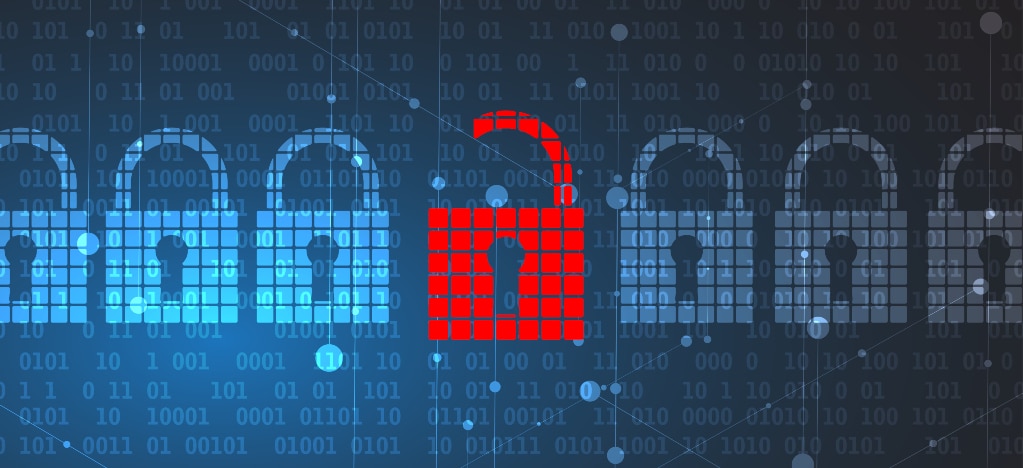Cybersecurity, an urgent challenge in Industry 4.0
The arrival of Industry 4.0 has shown in recent years that it is a revolution that has no turning back. There are many benefits that it is leaving in companies and the economy, but with its appearance some threat has also arisen from which it is necessary to protect oneself. Fortunately, the solutions to stop these threats not only exist but are improving day by day.
With the direct connection to the Internet of industrial control systems, the way in which industrial companies dealt with cybersecurity requires a change, if not radical, but qualitatively very important. The danger of the environments in which those who have been betting on investing in the transition to Industry 4.0 are located have verified how security models based on the isolation of production systems have been extended a spectrum to protect that no longer it is as clear and obvious as it was until a few years ago.
Cybercrime, a very real danger
The exponential increase in the number of devices connected to the Internet has led to the multiplication of threats. A new playing field for hackers, who, with increasingly refined methods, often go ahead of solutions to cover their entrances. And in any case, these cybercriminals mainly take advantage of those companies that have not invested enough in defending their assets from cyberattacks.
In recent times, the media has been giving a good account of the most notorious cybercrimes, although the truth is that it is only the tip of an iceberg of the problems that arise as a result of not preparing properly. It is just as important for an industrial company to change its technology to better control production, costs or marketing, as it is to invest in cybersecurity to avoid possible headaches that are more expensive in the long run.
Cybercriminals are very clear that in new industrial environments, the opportunities to do harm are many and very substantial. Theft of corporate data or theft of customer and supplier data are the order of the day. DDoS or denial of service attacks via the Internet or device hijacking can blow up the security of companies and block essential infrastructure for their production. Likewise, attacks involving manipulation of devices can lead to significant damage to infrastructures or to the end users of industrial production. Hence, an adequate investment in cybersecurity is increasingly not even optional. Otherwise, there are options that the company suffers so much that it is forced to close in the most extreme cases. And the forecasts of the specialists say that, far from decreasing, cyberattacks will continue to increase in the coming years.
What are cyberattacks like?
The sophistication of attacks via the Internet has led to cases that are as harmful as they are diverse. In their growing sophistication, cybercriminals have evolved from using malware aimed at damaging IT systems to influencing industrial protocols, taking advantage of the vulnerabilities they offer to punish them with advanced modular malware.
A decade ago, the well-known case of the Stuxnet malware took place. A software that introducing itself into industrial systems, reprogrammed the PLCs at will. Their objective was none other than to take control of certain Iranian infrastructures in order to delay the start-up of the Busherh nuclear plant as much as possible. Although it could never be proven, it is believed to have been the work of American and Israeli intelligence services. The method that was used was to use USB memory sticks on Windows operating systems and when they managed to be introduced, they reprogrammed the PLCs, stopping the turbines of the plant.
In recent years, a multitude of cyberattacks on critical industries and infrastructures have been detected, and the most significant is that behind most of them there was an increasingly sophisticated Advanced Persistent Threat (APT). This means that cybercriminals are also evolving, they have gone from using malicious software (malwares) aimed at IT systems, to using advanced modular malware that exploits vulnerabilities in industrial protocols.
In 2011, petrochemical companies were also the target of major cyberattacks with other types of cyberattacks to steal sensitive information. And that same year, another malware was responsible for stealing information from SCADA systems and digital certificate passwords in numerous industrial companies, using attachments when sending emails.
The casuistry has been very varied and increasingly compromising with the passage of time, as in the case of BlackEnergy, which was a denial of service attack of the most famous or Triton, which was designed to stop productions and cause damage to infrastructures.

They take advantage of the worker
Cybercriminals design intrusive systems thinking of the involuntary collaboration of a company employee to which they try to introduce malware or ransomware, which is a form of data hijacking of a company.
After all, a worker can open a dangerous attachment that the antivirus has not detected as potentially dangerous, or can connect an external memory to a computer without knowing that it contains some program that can cause chaos in your company. For this reason, it is so important that the cybersecurity design of an industrial company is adequate, is monitored and updated periodically and, of course, that the company’s employees receive sufficiently complete training to avoid, to the extent of the possible, reckless actions whose consequences can be dire.
The importance of a good consultant
Since the field to defend in Industry 4.0 is bigger and more ethereal. This requires a much more complex and larger implementation than was required until recent times, where the ecosystem of an industry was not as connected to the outside as it is today. And in such a delicate matter and that requires specific advice, the work of an IT and OT consulting company is becoming increasingly essential.
It is necessary to rethink the security parameters to protect the technological production processes of companies and the so-called CPS (Cyber-Physical Systems) systems. Confidential data needs to be secured, protecting the integrity of communications and collecting data in the phases and devices of the production process. Likewise, internal and external attacks must be prevented in an integrated manner, taking protection measures at the plant management level, in access control and in the intellectual protection of the company.
Industry 4.0 requires that its machines carry security functionalities in them. This allows you to interact with these devices without risk. Additionally, it is necessary to identify and classify possible risks and threats, as well as potential vulnerabilities of the company. Finally, hyperconnectivity, the Internet of Things (IoT) that depends on the cloud and physical servers, and big data, forces the integration of new technological devices with the control systems in factories.

